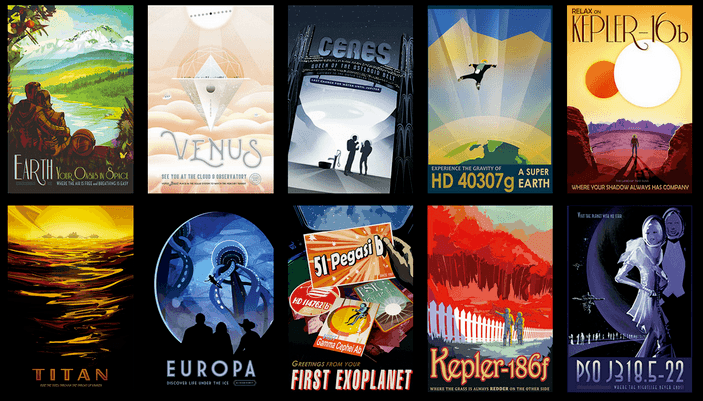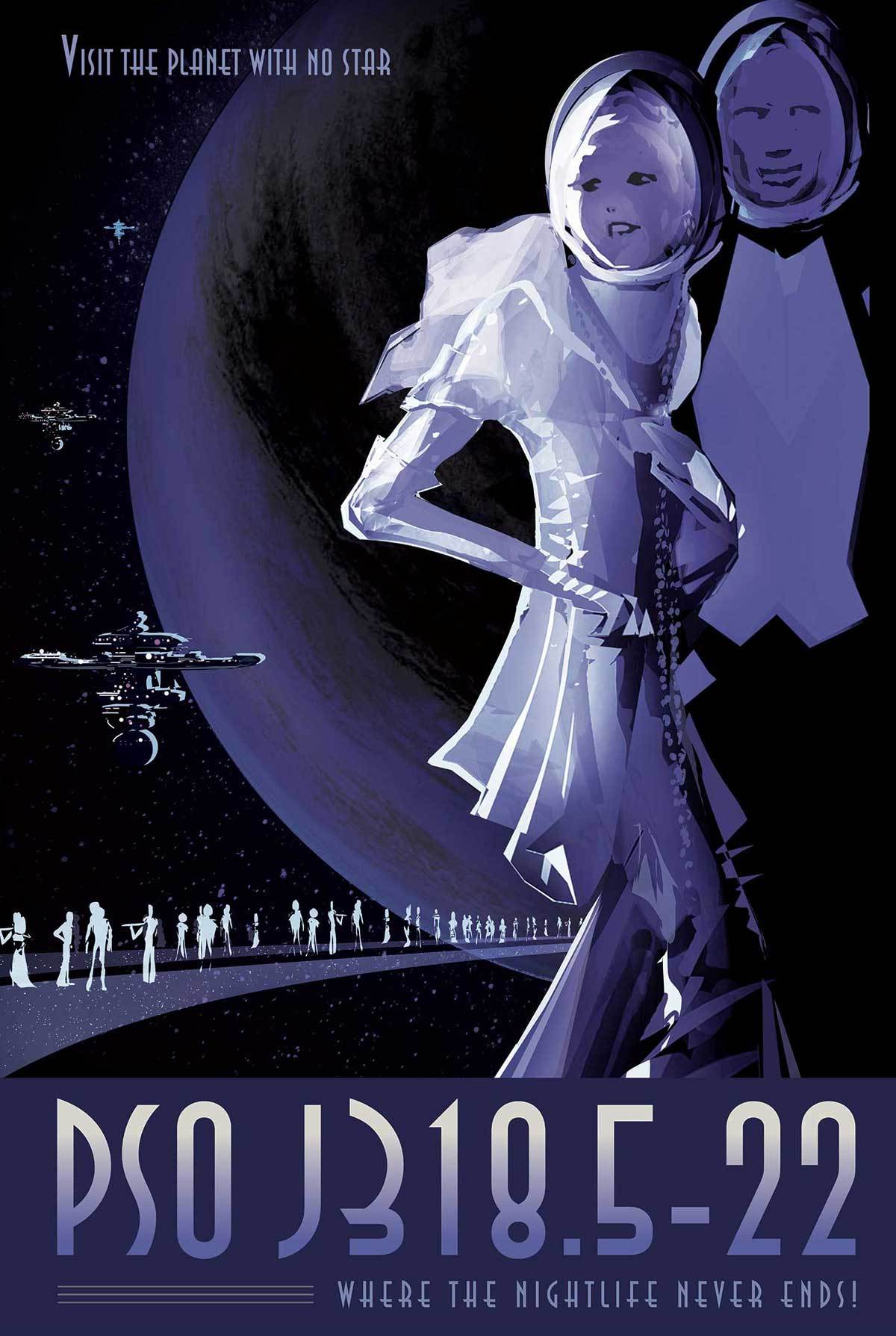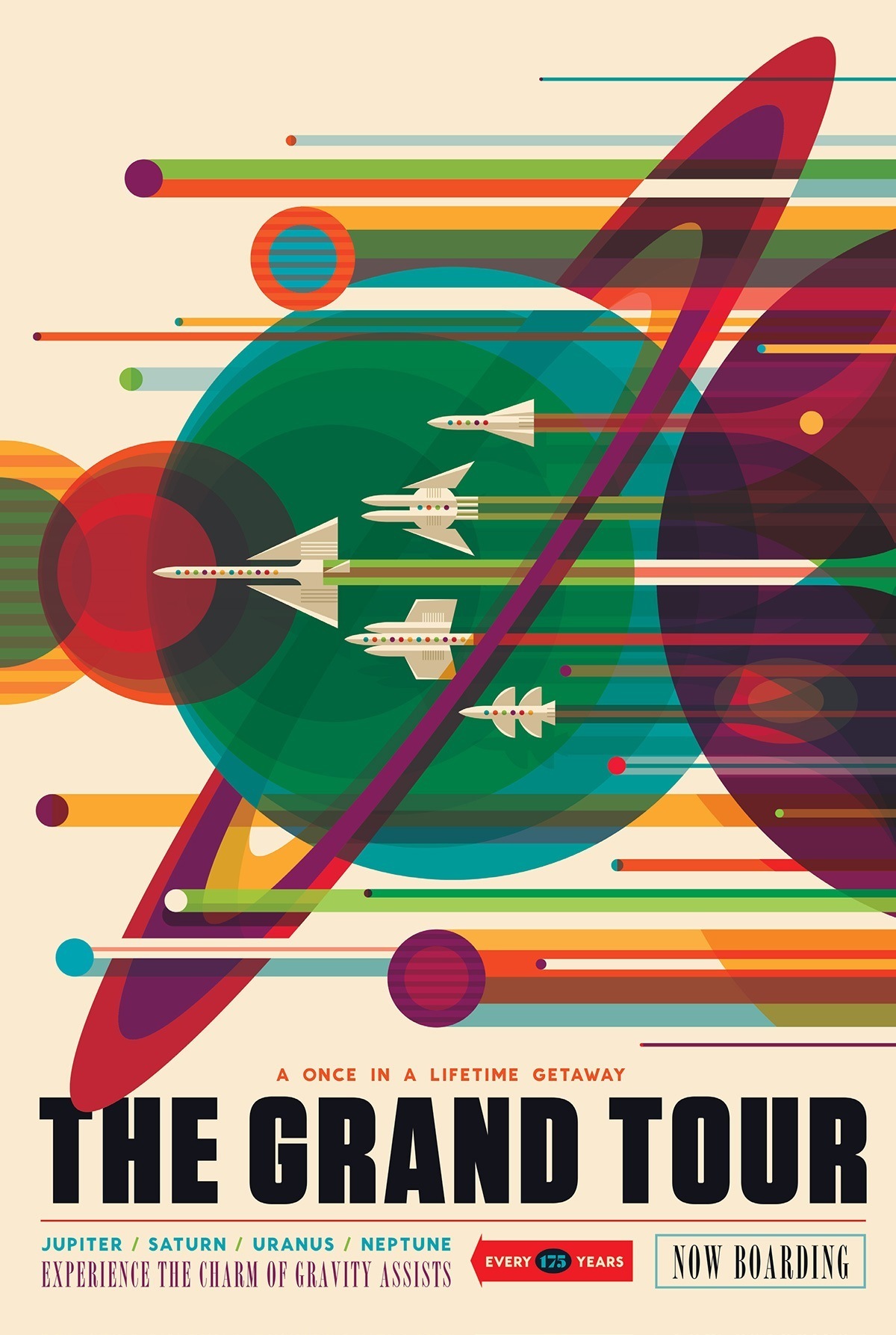
Get your printer ready
NASA has traveled to places we can only dream about. Spa travel might not be close to reality for us regular people anytime soon, but NASA for sure helps us keeping the dream alive. Check out these new travel posters from NASA’s Jet Propulsion Laboratory in Pasadena, California.
You can take a virtual trip to 14 alien worlds, and even print out these posters with planetary art in the form of futuristic space tourism posters. The posters are available free for downloading and printing at:
http://www.jpl.nasa.gov/visions-of-the-future/
The posters are the brainchild of The Studio at
JPL, a design and strategy team that works with JPL scientists and engineers to visualize and depict complex science and technology topics. Their work is used in designing space missions and in sharing the work of NASA/JPL with the public.
Here are a few just to get you excited:

There’s no place like home. Warm, wet and with an atmosphere that’s just right, Earth is the only place we know of with life – and lots of it. JPL’s Earth science missions monitor our home planet and how it’s changing so it can continue to provide a safe haven as we reach deeper into the cosmos.

Astonishing geology and the potential to host the conditions for simple life make Jupiter’s moon Europa a fascinating destination for future exploration. Beneath its icy surface, Europa is believed to conceal a global ocean of salty liquid water twice the volume of Earth’s oceans. Tugging and flexing from Jupiter’s gravity generates enough heat to keep the ocean from freezing. On Earth, wherever we find water, we find life. What will NASA’s Europa mission find when it heads for this intriguing moon in the 2020s.

Discovered in October 2013 using direct imaging, PSO J318.5-22 belongs to a special class of planets called rogue, or free-floating, planets. Wandering alone in the galaxy, they do not orbit a parent star. Not much is known about how these planets come to exist, but scientists theorize that they may be either failed stars or planets ejected from very young systems after an encounter with another planet. These rogue planets glow faintly from the heat of their formation. Once they cool down, they will be dancing in the dark.

NASA’s Voyager mission took advantage of a once-every-175-year alignment of the outer planets for a grand tour of the solar system. The twin spacecraft revealed details about Jupiter, Saturn, Uranus and Neptune – using each planet’s gravity to send them on to the next destination. Voyager set the stage for such ambitious orbiter missions as Galileo to Jupiter and Cassini to Saturn. Today both Voyager spacecraft continue to return valuable science from the far reaches of our solar system.

NASA’s Mars Exploration Program seeks to understand whether Mars was, is, or can be a habitable world. Mission like Mars Pathfinder, Mars Exploration Rovers, Mars Science Laboratory and Mars Reconnaissance Orbiter, among many others, have provided important information in understanding of the habitability of Mars. This poster imagines a future day when we have achieved our vision of human exploration of Mars and takes a nostalgic look back at the great imagined milestones of Mars exploration that will someday be celebrated as “historic sites.”
Get the downloadable versions and see them all at NASA.
Post by Katja Presnal

“My mission is to inspire you to live life to the fullest and find your own “skimbaco,” how you enjoy life where ever you are in the moment. For ideas for travel, home, food and fashion,
subscribe to weekly Skimbaco Lifestyle feed on Mondays and
I hope you get my newsletter that I send out sometimes on Fridays.”
Katja Presnal, editor-in-chief and the owner of Skimbaco Lifestyle.
Let’s connect!
Visit Skimbaco Lifestyle (Skimbacolifestyle.com)’s profile on Pinterest.







 “My mission is to inspire you to live life to the fullest and find your own “skimbaco,” how you enjoy life where ever you are in the moment. For ideas for travel, home, food and fashion, subscribe to weekly Skimbaco Lifestyle feed on Mondays and I hope you get my newsletter that I send out sometimes on Fridays.” Katja Presnal, editor-in-chief and the owner of Skimbaco Lifestyle.
Let’s connect!
Visit Skimbaco Lifestyle (Skimbacolifestyle.com)’s profile on Pinterest.
“My mission is to inspire you to live life to the fullest and find your own “skimbaco,” how you enjoy life where ever you are in the moment. For ideas for travel, home, food and fashion, subscribe to weekly Skimbaco Lifestyle feed on Mondays and I hope you get my newsletter that I send out sometimes on Fridays.” Katja Presnal, editor-in-chief and the owner of Skimbaco Lifestyle.
Let’s connect!
Visit Skimbaco Lifestyle (Skimbacolifestyle.com)’s profile on Pinterest.

